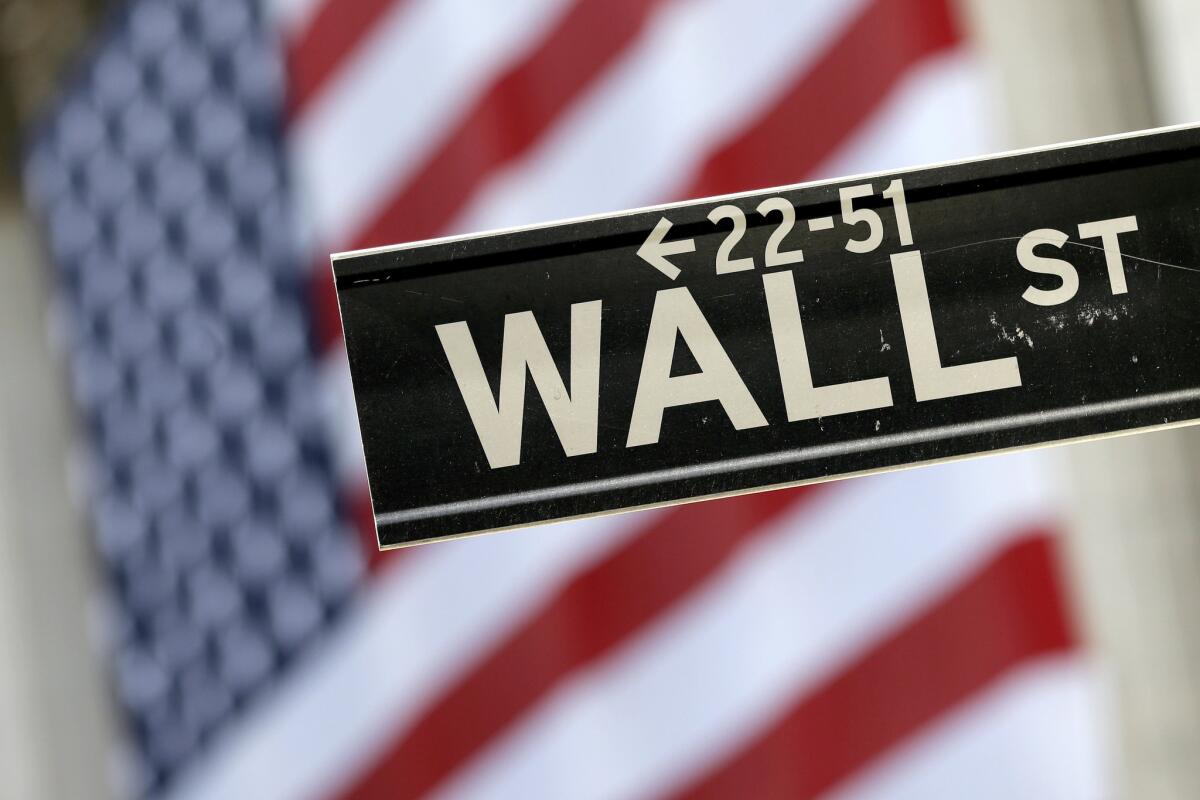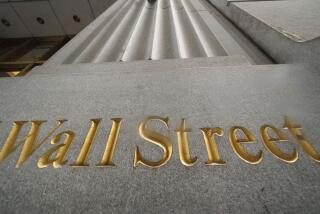Stocks rally on hopes about coronavirus

- Share via
In Wall Street’s tug-of-war between hope and pessimism about the COVID-19 pandemic, hope is showing some muscle.
U.S. stocks joined a worldwide rally Friday and closed out their first back-to-back weekly gain since the market began selling off two months ago. The Standard & Poor’s 500 index jumped 2.7% for the day, following even bigger gains in Europe and Asia.
Investors latched onto several strands of hope about progress in the fight against the coronavirus. They included the White House’s release of guidelines for states to reopen their economies and a very early but encouraging report on a possible treatment for COVID-19. Those events dovetailed with recent numbers that raised hopes for a leveling off of infections in some of the world’s hot spots.
The gains came even as data piled up showing the coronavirus outbreak’s severe economic and human toll. The virus has killed more than 150,000 people worldwide and forced the formerly high-flying Chinese economy to shrink a crunching 6.8% last quarter. A measure of leading economic indicators in the U.S. plunged last month by the most in its 60-year history, the latest in a string of similarly unprecedented data reports.
The S&P 500 rose 75.01 points to 2,874.56. The Dow Jones industrial average jumped 704.81 points, or 3%, to 24,242.49, especially lifted by Boeing shares, and the Nasdaq composite advanced 117.78 points, or 1.4%, to 8,650.14.
“There’s no clear path yet” on when the pandemic and resulting economic devastation will end, said Lindsey Bell, chief investment strategist at Ally Invest.
That has caused the stock market to cycle up, down and up again, sometimes in the same day, as it tries to set prices now for where corporate profits will be months in the future.
Optimists have been more forceful recently as they point to infections leveling off in some hard-hit areas around the world. That raises the possibility that parts of the economy could reopen — although not tomorrow — and eventually boost profits, which are currently expected to fall roughly 25% in the second quarter, according to FactSet. Optimists are willing to look through all the economic damage in the near term, which is being mitigated somewhat by massive aid from the Federal Reserve and the U.S. government.
“Just having that light at the end of the tunnel is what people really want to see,” said J.J. Kinahan, chief market strategist at TD Ameritrade.
The S&P 500 fell about 33% from its Feb. 19 all-time high to its March 23 low as the virus moved quickly from Asia to Europe to the United States, largely shutting down economies as it went. The market has recovered a little more than half of those losses since.
Pessimists say the recent rally for stocks has been overdone and point to the severe pain shocking the healthcare system and the economy. They say conditions are unlikely to get back to anything approximating “normal” soon. Even the unprecedented aid from the Fed and Congress won’t be nearly enough for households and businesses to weather a protracted downturn.
“We’re trying to bridge from the current state to the aftermath, and that bridge is just not long enough,” said Eric Freedman, chief investment officer at U.S. Bank Wealth Management. “That’s the bearish case, that consumers are impacted beyond what the policy can provide because the virus extends and people really hold off on making more expenditures.”
In a sign of a bit less caution in the market, Treasury yields ticked higher but remained extremely low. The yield on the 10-year Treasury rose to 0.64% from 0.61%. Bond yields drop when their prices rise, and investors tend to buy Treasurys when they’re worried about the economy.
”The government can give the mandate to reopen the economy, but it’s going to be all about how comfortable consumers feel in going back to their workplace and how comfortable they feel about going back to restaurants or doing other activities around other people,” said Ally Invest’s Bell. “The best way for us to get any insight into that is to listen to what corporations say about how they’re going to bring back their workforce. Is it going to be at a 25% rate? A 50% rate?”
Investors could hear such commentary in upcoming weeks, with hundreds of CEOs scheduled to discuss how badly their profits got hit by stay-at-home orders in the first three months of the year.
The market’s gains were widespread Friday, across all 11 sectors that make up the S&P 500. Energy producers and banks led the way, a sharp turnaround from their laggardly ways earlier in the week when worries about the economy were at the forefront.
In European trading, the CAC 40 in Paris rose 3.4%, while Germany’s DAX climbed 3.1%. Britain’s FTSE 100 added 2.8%.
Japan’s Nikkei 225 index jumped 3.1%, the Hang Seng in Hong Kong advanced 1.6%, and South Korea’s Kospi leaped 3.1%.
India’s S&P BSE 100 rose 2.8% after the central bank cut its benchmark interest rate to help the stalled economy and ease financing troubles amid a nationwide lockdown to fight the pandemic.
“Human spirit is ignited by the resolve to curb the pandemic,” said Reserve Bank of India Gov. Shaktikanta Das. “It is during our darkest moments that we must focus on the light.”
More to Read
Inside the business of entertainment
The Wide Shot brings you news, analysis and insights on everything from streaming wars to production — and what it all means for the future.
You may occasionally receive promotional content from the Los Angeles Times.










